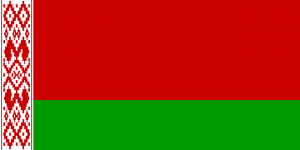Difference between revisions of "Language/Belarusian/Grammar/Imperative"
m (Quick edit) |
m (Quick edit) |
||
| Line 108: | Line 108: | ||
* [[Language/Belarusian/Grammar/Gender-Agreement|Gender Agreement]] | * [[Language/Belarusian/Grammar/Gender-Agreement|Gender Agreement]] | ||
* [[Language/Belarusian/Grammar/Pronouns|Pronouns]] | * [[Language/Belarusian/Grammar/Pronouns|Pronouns]] | ||
<span class='maj'></span> | |||
==Sources== | |||
* [http://cejsh.icm.edu.pl/cejsh/element/bwmeta1.element.desklight-f20c196d-e436-4c44-a9b1-60af547f2b6d/c/Volha_Hapeyeva_24-36.pdf Borderland Semantics of the Imperative. (The case of the Belarusian ...] | |||
{{Belarusian-Page-Bottom}} | {{Belarusian-Page-Bottom}} | ||
Revision as of 22:12, 14 March 2023
As a Belarusian language teacher with 20 years of teaching experience, I can tell you that learning the imperative mood is essential for communicating in any language. It allows you to give commands or make requests in a direct and polite way. In this lesson, you will learn how to use the imperative mood in Belarusian.
What is the Imperative Mood?
In grammar, the imperative mood is used for giving commands, making requests or giving advice. In Belarusian, it is formed by using the verb's stem and adding the appropriate ending for the person (singular or plural) you are addressing.
How to Form the Imperative Mood in Belarusian
To form the imperative in Belarusian, you need to follow these steps:
1. Take the infinitive (base form) of the verb 2. Remove the final "-ць" or "-ц" to obtain the verb stem 3. Add the appropriate endings for the person you are addressing
Here are the endings for the singular and plural forms of the imperative in Belarusian.
| Person | Ending | Example |
|---|---|---|
| Singular (you) | -й or -ы | Гаварыць (to speak) - гавары / гаварыце (speak) |
| Plural (you all) | -це | Гаварыць (to speak) - гаварыце (speak) |
Note that some verbs have irregular forms in the imperative. For example, the verb "быць" (to be) has the following imperative forms:
| Person | Form | Example |
|---|---|---|
| Singular (you) | Будь | Будь добры (be kind) |
| Plural (you all) | Будзьце | Будзьце тут (be here) |
Examples of using the Imperative Mood
Here are some examples of how to use the imperative mood in Belarusian:
- Прыходзь / Прыходзьце! (Come here!)
- Гавары / Гаварыце па-беларуску! (Speak Belarusian!)
- Ну, сядзі / сядзіце! (Well, sit down!)
- Прыгажай / Прыгажайце, калі будзе час! (Visit us when you have time!)
Tips for using the Imperative Mood
When using the imperative mood in Belarusian, keep the following tips in mind:
- Use the appropriate ending for the person you are addressing
- Use the appropriate tone of voice (firm or polite)
- Use the appropriate level of formality (informal or formal)
Conclusion
In this lesson, you learned how to form and use the imperative mood in Belarusian. Keep practicing and using it in context to improve your communication skills. Don't forget to check out our other lessons in the "Complete 0 to A1 Belarusian Course" to continue your language learning journey!
Related Lessons
- Possession
- Prepositional Case
- Infinitives
- Give your Opinion
- Adjectives
- Personal Pronouns
- Negation
- Past Tense
- Gender Agreement
- Pronouns
Sources
